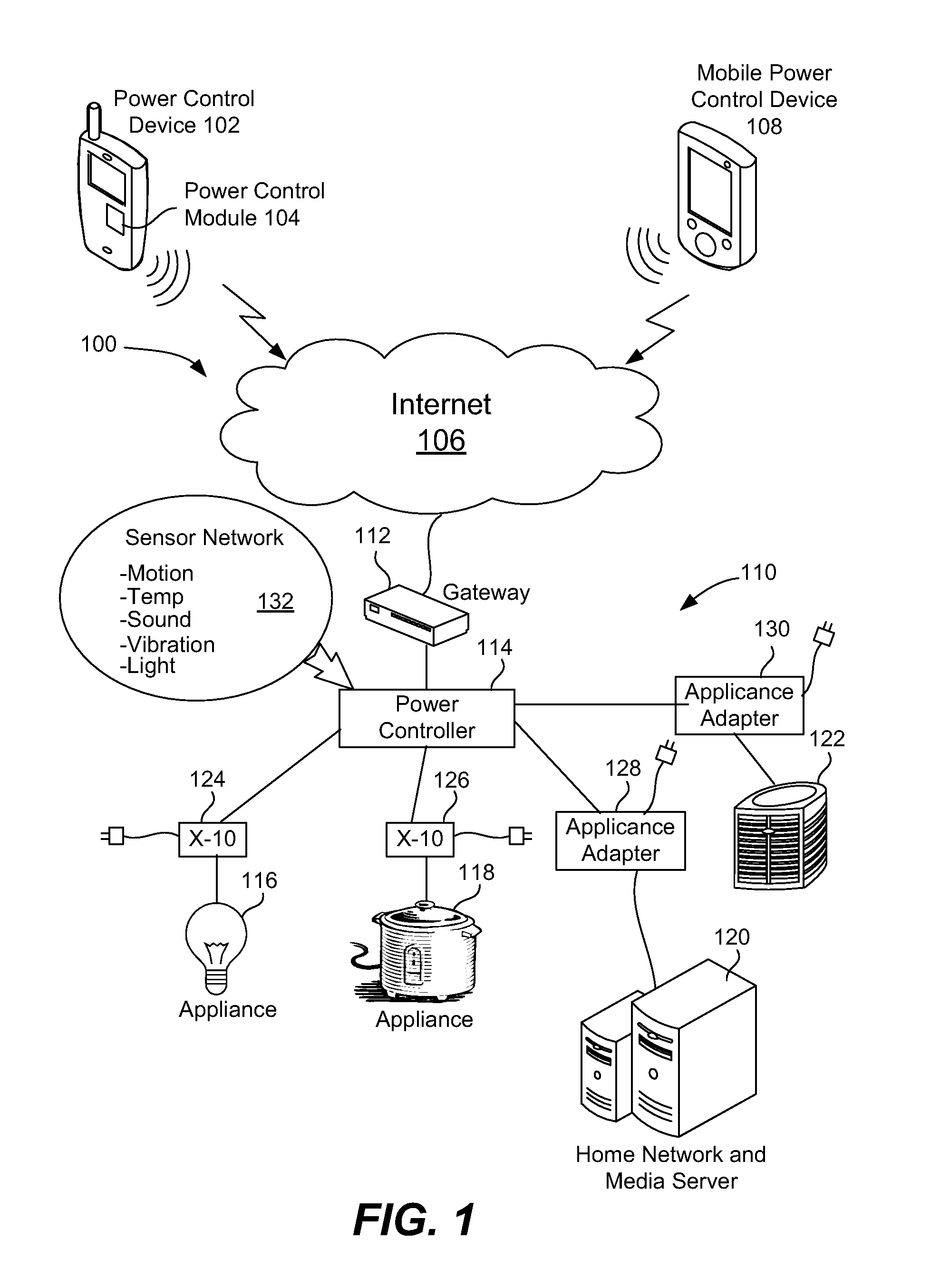Adaptive and user location-based power saving system
a power saving system and adaptive technology, applied in the direction of electric controllers, instruments, static/dynamic balance measurement, etc., can solve the problems of insufficient flexibility of time-based systems, inability to adapt to consumer power preferences or power profiles, and inefficient power-saving systems at managing power to devices and appliances
- Summary
- Abstract
- Description
- Claims
- Application Information
AI Technical Summary
Benefits of technology
Problems solved by technology
Method used
Image
Examples
Embodiment Construction
[0017]Methods and systems for controlling power supplied to appliances based on user location and using user power-saving profiles are described in the various figures. Location-based sensors are preferred. Such sensors provide power to devices based on the location of the consumer, for example, how far the consumer is from her home or office determines when devices will be powered on. Such power saving control systems need to be adaptive to a consumer's actual activities and actions.
[0018]FIG. 1 is an overview network diagram showing components in a power control system in accordance with one embodiment of the present invention. It shows one scenario in which the present invention may be used. In a power control-enabled device 102, such as a cell phone, contains a power control software or firmware module 104. The user of device 102 may download or install module 104 from the Internet 106, via a memory device, such as a USB key or compatible memory chip. In other embodiments, the u...
PUM
 Login to View More
Login to View More Abstract
Description
Claims
Application Information
 Login to View More
Login to View More - R&D
- Intellectual Property
- Life Sciences
- Materials
- Tech Scout
- Unparalleled Data Quality
- Higher Quality Content
- 60% Fewer Hallucinations
Browse by: Latest US Patents, China's latest patents, Technical Efficacy Thesaurus, Application Domain, Technology Topic, Popular Technical Reports.
© 2025 PatSnap. All rights reserved.Legal|Privacy policy|Modern Slavery Act Transparency Statement|Sitemap|About US| Contact US: help@patsnap.com



